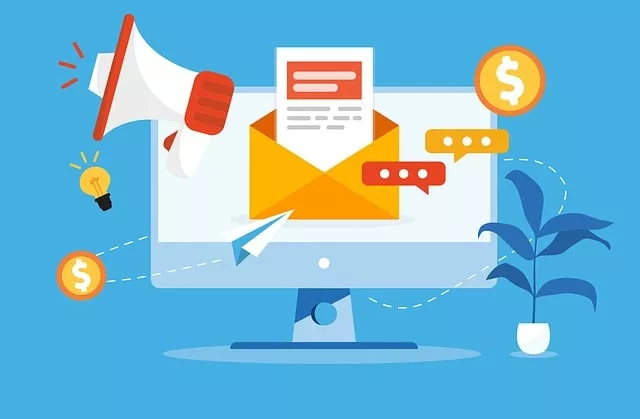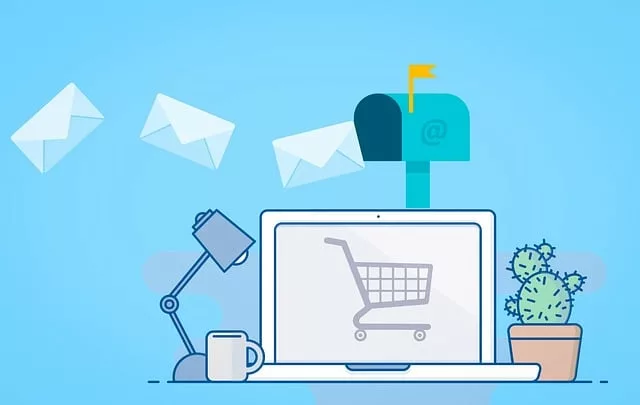In digital marketing, platforms may come and go, algorithms may shift, and trends may evolve. Yet one channel continues to prove its worth year after year: email newsletters. For affiliate marketers seeking to establish trust, maintain consistent engagement, and drive long-term conversions, newsletters are not just a tool; they are a cornerstone strategy.
While social media garners buzz and SEO pulls in traffic, your email list remains the one platform you own entirely. It is permission-based, targeted, and highly personal. When done right, newsletters can transform your audience from casual subscribers into loyal readers and customers.
Newsletters are compelling for affiliates promoting trusted platforms like Wealthy Affiliate. They allow you to educate, nurture, and gradually guide your audience toward decisions that truly benefit them without resorting to pushy sales tactics.
This article explores how to build loyalty and engagement through newsletters. From selecting the correct format and content strategy to crafting copy that resonates, we will cover every essential element needed to create a newsletter that fosters relationships and converts readers into loyal followers.
Why Newsletters Still Matter In Affiliate Marketing
Email marketing remains one of the most profitable digital marketing channels. According to numerous industry studies, the return on investment for email continues to outperform nearly every other channel. But beyond statistics, email provides something even more valuable—direct access to your audience.
Unlike social media platforms, where algorithms filter visibility, email puts your message directly in the subscriber’s inbox. When someone joins your list, they give you a front-row seat in their daily digital life. That level of trust cannot be overstated.
This is where the newsletter shines. It is not a transactional email or a promotional blast. A newsletter is a consistent, recurring touchpoint that allows you to build a relationship over time. With each issue, you reinforce your brand, offer value, and stay top of mind.
Your content can build credibility for affiliate marketers long before you introduce an offer. When you eventually recommend something like a platform such as Wealthy Affiliate, your readers are far more likely to listen, click, and convert because they trust you.



Choosing The Right Newsletter Format
There is no one-size-fits-all newsletter. The correct format depends on your brand voice, audience, and content strategy. However, the best newsletters typically fall into one of the following categories or blend elements of these categories.
The Editorial
This type of newsletter feels like a personal note or article from you to the reader. It may include a story, an opinion, a lesson, or a helpful insight. It is often conversational and designed to create a personal connection. This is an excellent format for individual brands or thought leaders.
Suppose you are documenting your journey with Wealthy Affiliate, for example. In that case, a weekly editorial-style newsletter can offer updates on your progress, lessons learned, or tips that helped you, subtly reinforcing your experience and building trust.
The Curated Digest
This format compiles a list of valuable links, resources, or content. It is ideal if you are positioned as a guide or educator in your niche. You might include recent blog posts, tools you are using, books you’re reading, or community updates.
You can link to your content and include affiliate links where relevant. For example, you might share your latest blog post, “5 Reasons I Chose Wealthy Affiliate Over Other Platforms,” as part of your weekly roundup.
The Educational Series
This format works well as a drip campaign or a recurring segment. Each issue delivers a lesson or deep dive into a specific topic. It works beautifully for onboarding new subscribers and guiding them through the fundamentals of affiliate marketing.
For new subscribers to your list, consider creating a five-day educational series on how to launch their first affiliate website. Day one could focus on mindset, day two on niche selection, and so on, with each day leading naturally toward your Wealthy Affiliate link as the recommended tool.
Regardless of the format, the goal is to deliver value and build a pattern of helpfulness and consistency. That is what drives long-term engagement.

Crafting Content That Builds Loyalty
Your readers will only continue opening your newsletters if they consistently find value in them. That value may come from education, entertainment, insight, or practical tips, but it must be relevant and consistent.
Storytelling Builds Emotional Connection
People remember stories far more than facts or features. Sharing your journey, including how you discovered affiliate marketing, your struggles, wins, and setbacks, makes your emails relatable and human.
If you had doubts about joining Wealthy Affiliate, but then found success through its training and support, tell that story. Readers who identify with your journey are more likely to believe in your current solution.
Stories make your recommendations feel less like promotions and more like friendly suggestions. This reduces resistance and fosters loyalty.
Teaching Builds Authority
When you teach something valuable, you become a trusted source of information. The more helpful your content is, the more your audience views you as a leader in your niche.
You do not need to be a guru. Share what you are learning. Explain concepts in simple language. Offer checklists, how-to guides, or even recommended reading. Over time, this builds trust.
If your newsletter regularly helps people understand affiliate marketing, they are more likely to trust your recommendation of Wealthy Affiliate as the logical next step.
Consistency Builds Reliability
The key to building loyalty is consistency. This does not mean daily emails. It means establishing a rhythm your audience can count on.
Whether it is once a week, bi-weekly, or monthly, set a schedule and stick to it. Let readers know when to expect you and deliver consistently. It is better to send one high-quality newsletter every week than to overwhelm your list with sporadic, rushed messages.
Consistency also applies to voice and tone. Readers should feel like they know you, and that familiarity makes your emails a welcome presence in their inbox.
Encouraging Engagement Through Your Emails
Loyalty grows stronger when communication flows both ways. Encourage your readers to interact with you by asking questions, inviting replies, or running quick polls.
When someone replies to your email, treat it as gold. Respond promptly and personally. This human touch deepens trust and increases the likelihood of future conversions.
Here are a few ways to foster engagement:
- Ask an open-ended question related to your email topic
- Invite readers to share their experience or opinion
- Host a subscriber Q&A and share the answers in future emails
- Feature reader stories (with permission) in your newsletter
Engagement also trains email clients to see your messages as wanted content, which improves deliverability and open rates.
Writing Effective Calls to Action
Even though your primary goal with newsletters is relationship-building, you still want readers to take action. However, not every email needs to include a sales pitch, and most should not.
Alternate your calls to action based on the reader’s stage in the journey. Early subscribers might be encouraged to read a related blog post. Warm leads could be invited to participate in a complimentary training. Hot prospects may be ready to click your affiliate link and sign up for Wealthy Affiliate.
A few tips for better calls to action:
- Make it relevant to the content of the email
- Use clear, simple language
- Limit each email to one main action
- Reinforce the benefit of clicking
Instead of saying, “Click here to join Wealthy Affiliate,” say, “If you are ready to stop guessing and start building a real online business, look at the platform that helped me get started.”

Tracking Metrics That Matter
To improve your newsletter performance over time, track key metrics and use the data to refine your strategy.
The most important metrics include:
Open Rate
This demonstrates the effectiveness of your subject lines and sender name. If your open rate is low, consider testing new subject lines or experimenting with timing.
Click-Through Rate (CTR)
This demonstrates the effectiveness of your email content and calls to action. If people are opening but not clicking, your content may need to be more focused or actionable.
Unsubscribe Rate
While a few unsubscribes are normal, a high rate may indicate that your content does not meet subscriber expectations.
Reply Rate
A high reply rate shows engagement and trust. If readers are responding to your emails, you are building genuine relationships.
Utilize these insights to refine your future email campaigns. Test subject lines, layouts, frequency, and tone. Over time, your newsletter becomes a finely tuned relationship engine.
Segmenting Your Audience For Better Results
As your list grows, not every subscriber will be at the same stage of development. Some may be brand new to affiliate marketing, while others might already be earning a living but looking to scale their efforts. Sending the same message to everyone limits your effectiveness.
Segmentation allows you to send more relevant messages to each group. You can segment based on:
- Signup source (lead magnet or opt-in page)
- Engagement level
- Past behavior (clicked links, downloaded resources)
- Self-identified stage or goal
For example, new subscribers may receive a welcome sequence that introduces them to Wealthy Affiliate. More experienced subscribers could receive advanced tips, success stories, or updates about new features.
The more personalized your content, the more it feels like a one-to-one conversation rather than a broadcast.
Maintaining Compliance And Best Practices
Always include a visible unsubscribe link in every email. Respecting your subscribers’ preferences fosters long-term goodwill and ensures compliance with global email regulations, such as GDPR and CAN-SPAM.
Ensure your email service provider supports opt-in tracking, list segmentation, and reporting. Popular platforms like ConvertKit, MailerLite, and ActiveCampaign offer robust tools for affiliate marketers.
Avoid using deceptive subject lines or misleading promises. Set expectations clearly at the point of signup. Inform readers about what they can expect and how frequently they will receive it. That clarity improves trust and reduces complaints.
Lastly, always disclose affiliate relationships when relevant. Transparency not only meets legal requirements but also enhances trust. Your subscribers will appreciate your honesty.
Newsletters are not just another marketing channel. They are a relationship-building tool that allows you to consistently show up, deliver value, and build lasting trust with your audience.
For affiliate marketers, especially those promoting platforms like Wealthy Affiliate, newsletters provide a reliable way to connect with readers beyond the noise of social media or the fluctuations of search engine rankings.
If done well, a newsletter becomes more than a communication tool. It becomes a platform for teaching, storytelling, community building, and ultimately conversion. It allows you to take a casual visitor and guide them, step by step, toward becoming a loyal customer.
The key lies in consistency, clarity, and genuine value. Focus on helping first, and the sales will follow. Stay engaged, stay authentic, and let your newsletter become the heartbeat of your affiliate business.

